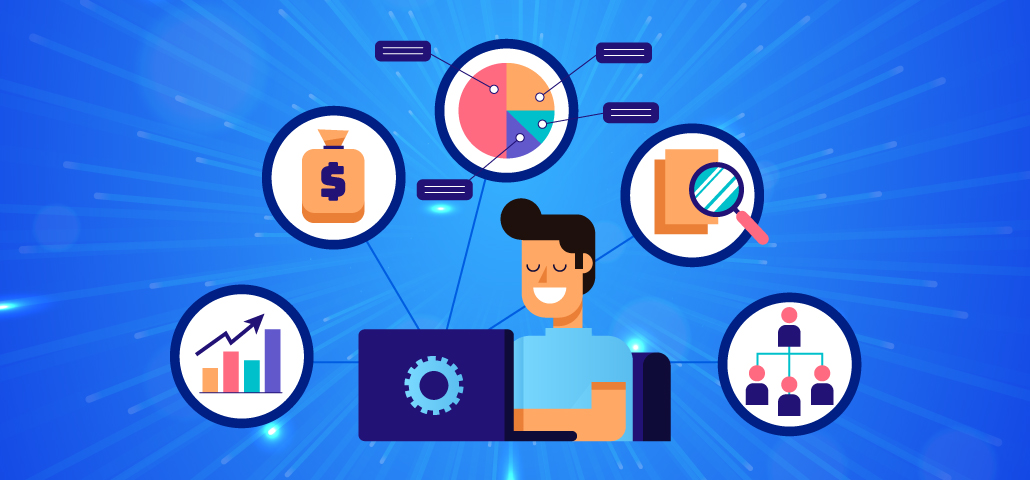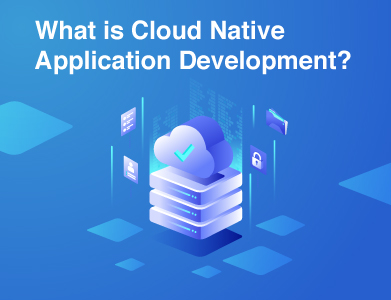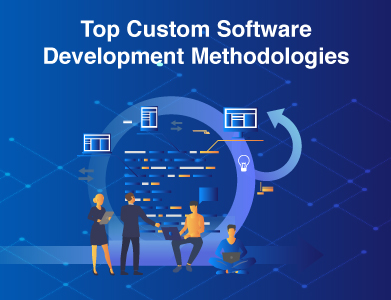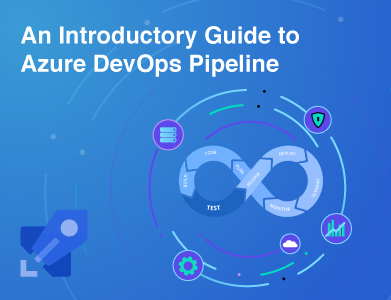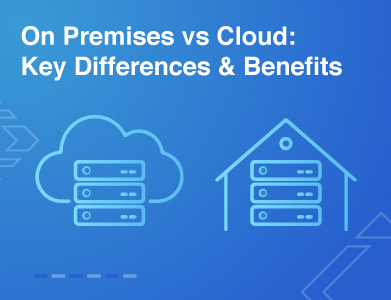Expertise
There’s a point in the business lifecycle where you face challenges of managing a complex business. Juggling financials, inventory, supply chain, and customer relationships can feel like spinning plates while walking on a minefield. That is, until you discover the game-changing power of Enterprise Resource Planning (ERP) software.
An Enterprise Resource Planning (ERP) system is software that helps a company manage all its operations. However, understanding ERP can be complex. Many people frequently search for terms like "What is ERP?", "What does ERP stand for?", and "What do ERP systems do?". We'll address these questions here.
Over the past few years, Google Trends shows a 200% increase in ERP-related searches, with the figure doubling in the last two years. This rise is due to businesses facing uncertainty and needing technology like ERP systems to become more agile and adapt to new working environments.
ERP is an intelligent automation engine that can streamline your core business processes. Imagine your team being freed from monotonous tasks like invoicing and payroll, allowing them to focus on higher-value work that drives your company forward.
ERP brings it all together into a centralized hub, giving everyone in your organization access to the same up-to-date information. Gone are the days of hunting down invoices, chasing inventory numbers, or struggling to get a clear picture of your financial health.
And the benefits don't stop there. ERP systems solutions provide powerful analytics and reporting capabilities, giving you unprecedented visibility into your operations. With real-time data at your fingertips, you can spot trends, optimize workflows, and address issues before they become major problems.
Sounds too good to be true? Let’s address your questions in a detailed guide that answers what ERP is, and how does it work.
What Is Enterprise Resource Planning (ERP)?
ERP, or Enterprise Resource Planning, is a comprehensive software solution that enables companies to manage and integrate all their core business processes within a single system. This includes areas such as finance, manufacturing, distribution, sales, procurement, supply chain, projects, services, and customer care.
By standardizing and streamlining operations, ERP systems help organizations across various industries enhance efficiency and effectiveness. In essence, ERP solution allows different departments within an organization to work together seamlessly by sharing information and coordinating activities through a single platform.
Why Is ERP Important for Businesses?
ERP is crucial for businesses because it improves efficiency, enhances collaboration, and enables better decision-making. By integrating data from various departments, ERP systems provide a holistic view of the organization’s performance, helping businesses respond quickly to market changes, reduce operational costs, and comply with industry regulations.
Components of ERP Systems
ERP systems consist of several modules, each designed to manage specific business functions.
Finance and Accounting
- General Ledger tracks all financial transactions.
- Accounts Payable/Receivable manages outgoing and incoming payments.
- Budgeting and Forecasting assists in planning and financial projections.
Human Resources (HR)
- Employee Records centralizes employee data.
- Payroll Automates salary payments and tax calculations.
- Talent Management manages hiring, training, and performance reviews.
Supply Chain Management (SCM)
- Inventory Management tracks stock levels and orders.
- Order Management System automates sales orders and deliveries.
- Procurement Manages purchasing of raw materials.
Customer Relationship Management (CRM)
- Sales Management tracks leads, opportunities, and customer interactions.
- Customer Service manages customer support and service.
- Marketing Automation automates marketing campaigns and tracks their effectiveness.
Manufacturing
- Production Planning schedules and manages production activities.
- Quality Control ensures products meet quality standards.
- Maintenance Management schedules and tracks equipment maintenance.
Benefits of Implementing ERP Systems
- Streamlines Your Workflows ERP systems automate routine tasks like order processing and cloud inventory management, reducing the need for manual intervention and minimizing errors. This automation leads to faster and more accurate operations, allowing employees to focus on more strategic tasks.
- Fostering Cross-Departmental Collaboration With a centralized data repository, different departments can collaborate more effectively. For example, the sales team can access real-time inventory levels, ensuring they provide accurate information to customers and reducing the risk of over-promising.
- Insights-Driven Decision Making Real-time reporting and analytics provide insights that help managers make data-driven decisions. Access to up-to-date information enables quick responses to market changes and competitive pressures.
- ERP's Cost-Cutting Capabilities ERP systems can reduce operational costs by streamlining processes and eliminating redundancies. For instance, automating inventory management can reduce carrying costs and minimize stockouts.
- ERP's Regulatory Standards ERP systems help businesses comply with industry regulations by providing accurate and up-to-date records. This is particularly important in industries with strict regulatory requirements, such as healthcare and finance.
- The Scalable Nature of ERP Systems ERP systems are scalable, meaning they can grow with the business. As companies expand, they can add new modules or users to the ERP system without disrupting operations.
- ERP's Customer Support Improved service delivery through efficient processes leads to higher customer satisfaction. For example, accurate order processing and timely delivery can enhance the customer experience.
- Data Security ERP systems offer robust security features to protect sensitive business data. Centralized data management ensures that data is consistently backed up and protected from unauthorized access.
- Flexibility of ERP Systems ERP systems adapt to changing business needs, allowing companies to modify processes as they grow. This flexibility is crucial in dynamic markets where businesses must respond quickly to new opportunities or challenges.
- ERP's Resource Optimization Efficient use of resources, such as labor and materials, is achieved through better planning and control. For example, production planning modules ensure optimal use of raw materials, reducing waste and lowering costs.
Explore More: What Is an ERP Implementation?
Challenges and Considerations in Implementing ERP Software Systems
- Cost ERP software systems can be expensive to implement, especially for small businesses. The cost includes software licenses, hardware, training, and ongoing maintenance. However, the long-term benefits often outweigh the initial investment.
- Complexity Implementing an ERP system can be complex and time-consuming. It requires careful planning, data migration, and employee training. Organizations must be prepared for potential disruptions during the implementation phase.
- Customization While ERP systems are designed to be flexible, excessive customization can lead to increased ERP software costs and complexity. Businesses should aim to use the standard features of the ERP system as much as possible and customize only when necessary.
- Change Management Successful ERP implementation requires effective change management. Employees need to be trained in the new system, and management must ensure that they understand the benefits and are motivated to use it effectively.
- Data Migration Transferring existing data to the new ERP system can be challenging. Data migration requires careful planning to ensure that all relevant data is accurately transferred without loss or corruption.
ERP Deployment Options
- On-Premises ERP Installed locally on a company’s hardware and servers. This option provides greater control over data and customization but requires significant upfront investment in infrastructure and IT staff.
- Cloud ERP System Hosted on the vendor’s servers and accessed via the internet. Cloud ERP solutions are typically easier to implement and scale, with lower upfront costs. They also offer automatic updates and maintenance, reducing the burden on internal IT staff.
- Hybrid ERP Combines on-premises and cloud-based deployment. Hybrid ERP systems allow businesses to maintain control over sensitive data with on-premises solutions while leveraging the flexibility and scalability of the cloud for other functions.
The Future of ERP
The future of ERP is moving towards more cloud-based solutions, increased use of artificial intelligence (AI) and machine learning (ML) for predictive analytics, and enhanced mobility with mobile ERP applications. These generative AI advancements and tools will further streamline operations and improve decision-making processes for businesses.
How to Select the Right ERP System
- Assess Business Needs Understand your company’s specific requirements. Identify the processes that need improvement, and the features required to support those processes.
- Evaluate Options Compare different ERP solutions based on features, costs, and scalability. Look for systems that offer the functionality needed to support your business processes.
- Vendor Reputation Consider the vendor’s experience and customer support. Look for vendors with a proven track record of successful implementations and reliable support services.
- Customization and Flexibility Ensure the system can be tailored to your needs. Look for ERP solutions that offer flexibility in customization to match your specific business requirements.
- Integration Capabilities Check how well the ERP integrates with existing systems. Ensure that the ERP system can seamlessly connect with other software used in your organization.
ERP Case Studies
Manufacturing: Toyota
Toyota uses ERP to streamline manufacturing processes and maintain quality control. By integrating production planning, inventory management, and quality control, Toyota ensures efficient operations and high-quality products. This integration helps Toyota manage its vast production lines and supply chain effectively, leading to increased efficiency and reduced costs.
Retail: Walmart
Walmart uses ERP to manage inventory and supply chain operations efficiently. The system provides real-time insights into sales trends and inventory levels, helping Walmart optimize its stock and improve customer service. With ERP, Walmart can respond quickly to market demands and maintain a competitive edge in the retail industry.
Healthcare: Mayo Clinic
Mayo Clinic, a globally recognized healthcare provider, uses ERP systems to manage patient records, billing, and supply chain operations. The ERP system ensures that patient information is accurate and accessible, improving the quality of care and administrative efficiency. By integrating these functions, Mayo Clinic can provide better patient outcomes and streamline its operations, maintaining its reputation for excellence in healthcare.
Fintech: PayPal
PayPal, a leader in online payments, uses ERP solutions to manage its financial transactions, customer relationships, and compliance requirements. The ERP system helps PayPal handle vast amounts of transaction data, ensuring accuracy and security. This integration allows PayPal to maintain regulatory compliance and provide reliable services to its users.
E-commerce: Amazon
Amazon employs ERP systems to manage its vast inventory, order processing, and customer service operations. The ERP system provides real-time data on inventory levels, order status, and shipping, enabling Amazon to offer efficient and reliable service to millions of customers worldwide. This integration helps Amazon maintain its position as a leading e-commerce platform by optimizing its supply chain and improving customer satisfaction.
Learn More: Guide to ERP Transformation
Gain Control of Your Business
In the end, Enterprise Resource Planning (ERP) solutions are more than just technical software - they are significant changes for businesses of all sizes and industries. We have explored what ERP is and how it works, seeing how these powerful ERP applications can streamline operations, boost efficiency, and provide crucial insights for better decision-making.
Yes, implementing an ERP software system is a significant step, but as we've seen, the benefits far outweigh the initial challenges. From cost savings to improved collaboration, the positive impacts of how ERP systems work ripple throughout an organization.
Looking to the future, ERP solutions will continue to play a vital role in helping businesses adapt and thrive. Those who embrace Enterprise Resource Planning solutions now are positioning themselves for long-term success.
So, whether you are considering your first ERP implementation or looking to upgrade your current Enterprise Resource Planning solution, remember: this investment is about more than just improving your operations today. It is about building a flexible, efficient, and competitive business ready for whatever tomorrow brings.
The journey to ERP success may not always be smooth, but with careful planning and the right approach, it is a path that can lead your business to new heights. As you move forward, keep in mind the insights we have shared about how ERP works, and do not hesitate to seek expert guidance along the way.
In this digital age, staying ahead often means embracing change. And for many businesses, that change starts with an ERP solution.
